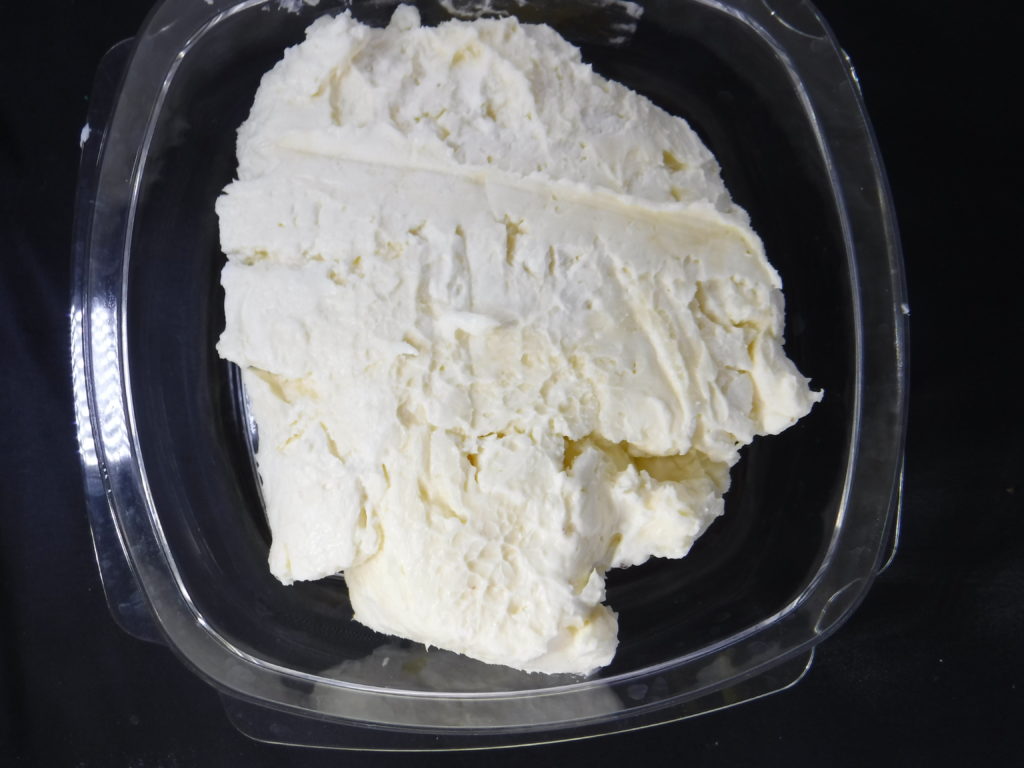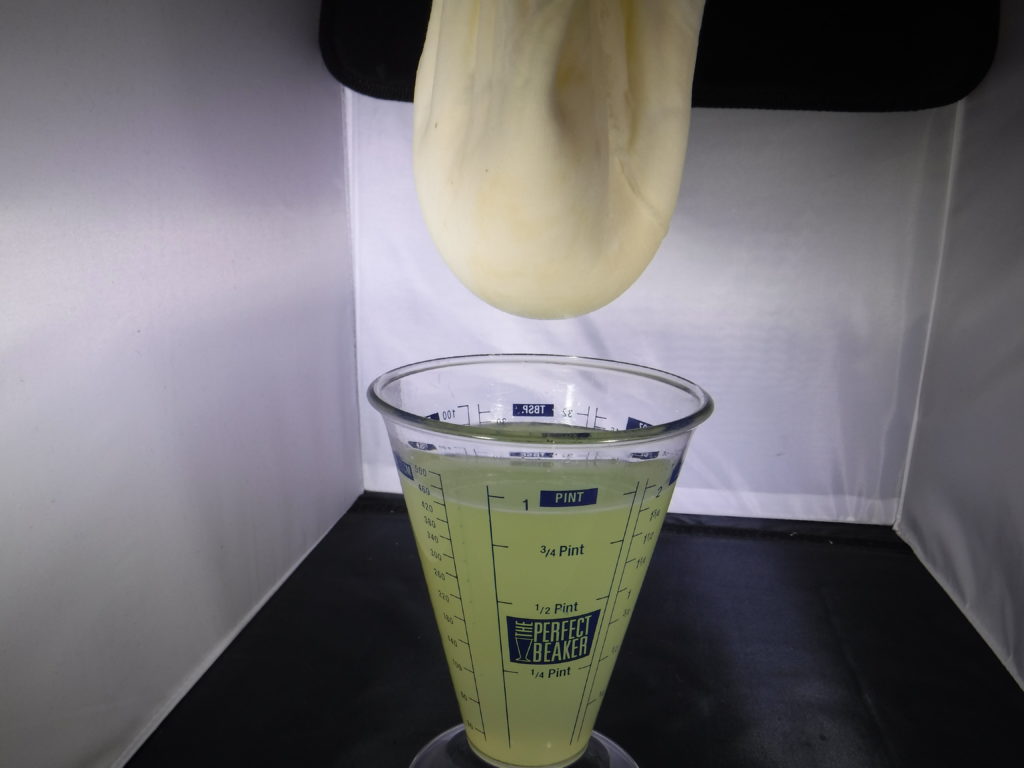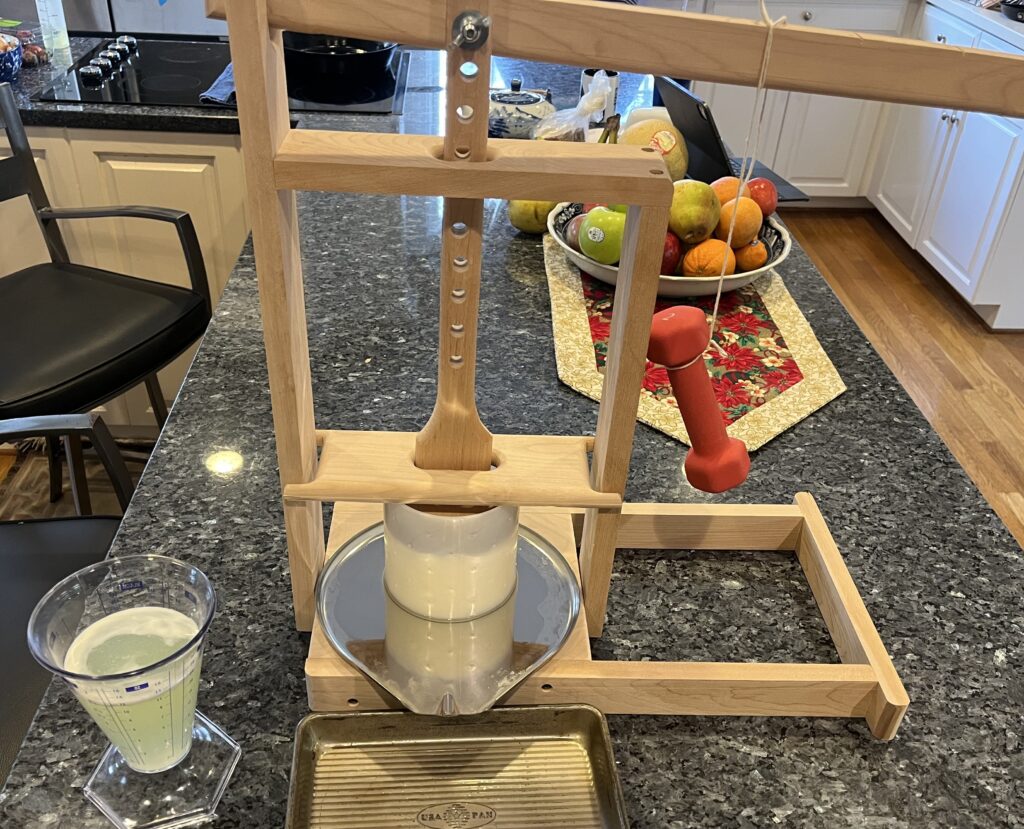
Updated 1/25/25
One of the first cookbooks I bought many years ago was Better Than Store Bought, which was about making at home foods which Americans normally purchase. This was a very useful idea when I lived in Thailand and many American products were unavailable or very expensive. One of the recipes in the book was about making cream cheese, and the authors extolled how good home-made cream cheese was, since it did not have the stabilizers, etc. added to commercial cream cheese to increase shelf live. Fast forward 40 years, and I noticed in Mrs. Wheelbarrow’s Practical Pantry another recipe for cream cheese. Fast forward another 5 years and I saw a recipe in Cathy Barrow’s Bagels, Schmears, and A Nice Piece of Fish, which turns out to be the same as Mrs. Wheelbarrow’s in terms of ingredients although slightly different in process.
This recipe was very easy since one of the alternatives for culturing the cream/milk mixture was to add some cultured buttermilk, which is readily available in Richmond since people like to use it for biscuits, etc. The recipe worked well and was very easy. I have used it with caramelized onions and beef Better that Bouillon to make a very tasty onion dip, and with smoked salmon on a bagel.
Note: I used “cream line” (i.e. non-homogenized) milk, which I understand works better for cheesemaking. It is available at my local Kroger
2 cups whole milk
2 cups heavy cream
½ cup full fat cultured buttermilk
¼ tsp. kosher salt
Mix together the milk, cream and buttermilk. Pour into two clean quart mason jars. Cover the jars with some plastic wrap and secure with screw bands. Place in a quiet part of the kitchen where it will be about 75 degrees for about 30 hours, or until the mixture has the consistency of strained yogurt. Since this was the summer, my kitchen was slightly warmer, ~76-79 degrees. I had set it up in sous-vide equipment set at 75 degrees, but that proved unnecessary. The slightly higher temperature was not a problem. (Note that this preparation is quite different from yogurt, in which the milk is brought up to ~182 degrees before being cooled to 110 degrees, at which temperature some old yogurt with live culture is added. The yogurt then ferments at 110 degrees.)
When the cream/milk mixture is fully cultured, There are two alternatives on how to drain the cream cheese to the right consistency.
The lower tech way is to place some butter muslin or cheese cloth over a colander over a bowl, and pour in the cultured mixture to drain for about 30 minutes. About a cup of whey should collect in the bowl. After about 30 minutes, gather the corners of the cloth, secure them with a strong rubber band or string, and suspend the curds over a bowl. Hang for 8-12 hours until it reaches a thickness similar to commercial cream cheese. As shown by the photograph, about 2 cups of whey drained from the cheese.

To further hasten the draining and drying of the cheese, I had a small fan blow on it on low.
A higher tech alternative is to use a cheese press, which I happen to have. Start with the cheesecloth and the colander, and then put the cheesecloth in a cheese mold, and press it with a light weight, such as 2 lbs. Let the cream cheese drain for a few hours until nearly 2 cups of whey have drained off.

After the cheese has the reached the right consistency. Put it on a work surface and sprinkle in the salt, folding the cheese a few times to mix the salt in. Store the cheese in the refrigerator, where it will become more firm. Use within 2 weeks.

